Cover Story
Right-Sizing Your Materials
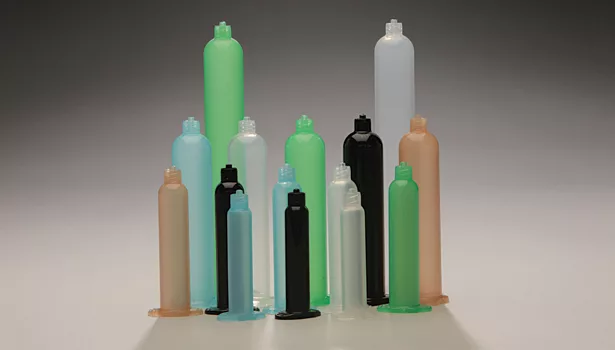
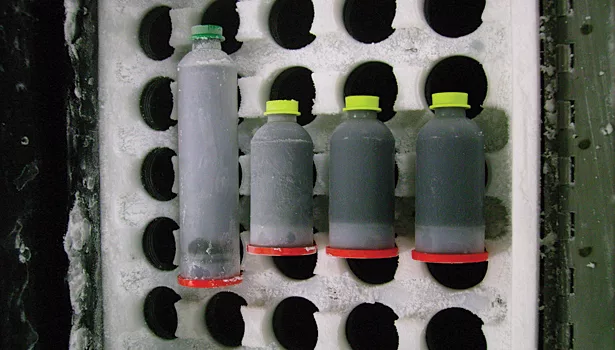
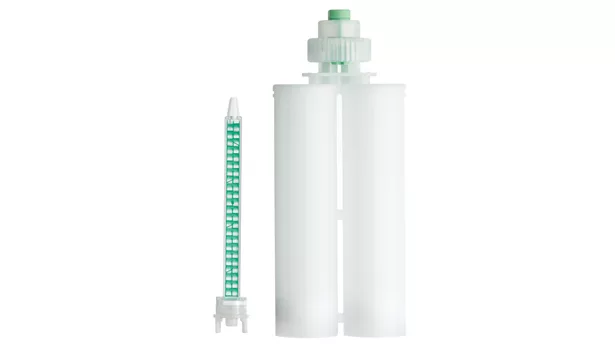
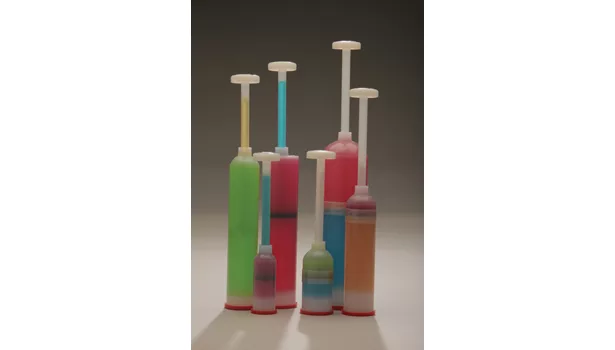
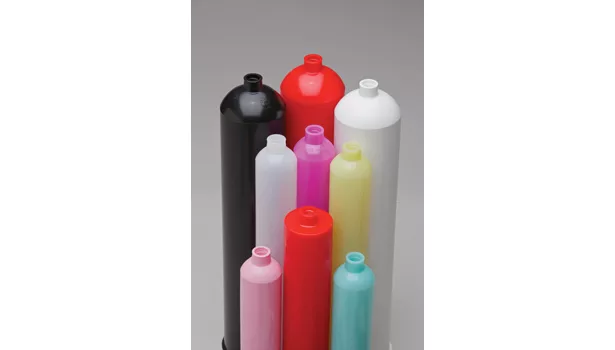
You do not need to sacrifice quality to save money.
The total cost of ownership or usage of an adhesive or sealant is much higher than just the price paid for it. Although this sounds intuitive, many people who buy adhesives and sealants use the invoiced price of a product coupled with the performance of the material as the two most important criteria in deciding what material to buy and from whom to buy it.
While the performance of the adhesive or sealant should be the most important factor in choosing a product to buy, the second most important factor should be total cost of ownership of the product, not the price “in the door.” It is useful to examine the options for reducing the total cost of ownership of adhesives and sealants while simultaneously improving the quality and consistency of bonds and seals.
Hidden Costs
The total cost of ownership of a material only begins with the purchase price. Additional, much larger costs to the company are often overlooked and can include labor used in measuring and mixing the material, wasted labor of the operator walking to the mix crib or mixing area, labor to download or change the container of a material, cost of secondary containers used, labor to apply the material, cost of additional items needed to apply the material, labor to dispose of the unused material, and disposal costs of unused material. In some applications, the total cost of ownership and application of a material can be more than 10 times higher than the purchase price of that material.
While some adhesive and sealant manufacturers make an effort to provide user-friendly, labor-saving packages, many focus on delivering their material in the most cost-effective ways. Most products are only available from the manufacturer in a few different package sizes that include drums, pails, gallons or quarts. If easy-to-apply packaging is offered, it usually comes in a few sizes or fill weight options. The burden has been placed on the customer to focus on saving internal costs and optimizing the quality of the bonds and seals.
Extra costs and problems can occur while downloading or mixing materials in your facility. The obvious cost is the container used for downloading. Other costs include the labor cost of mixing or downloading, as well as the loss of productivity when the operator is away from the work area.
Quality issues can be the most costly. Every time a bulk container of material is opened to remove material to mix in smaller batches, there is a risk of foreign object contamination, air or moisture changing the rheology of the material, employee exposure to fumes or
out-gassing, and spills or accidents while downloading the material, as well as a human error risk of the material being mixed out of ratio. Depending on the material used, contamination or out-of-ratio mixing can cause dramatic performance changes in bonds and seals, and can create strength inconsistencies and failures.
Finding a Solution
Right-sizing your materials is the easiest way to lower the total cost of ownership of adhesives and sealants while simultaneously increasing the quality of the end product. A repackager may be able to custom package some of your adhesives and sealants with a focus on reducing your labor costs, reducing the cost of waste, improving the quality of your end product, and making your operators happy by giving them an easy-to-apply package. You can also specify the exact fill weight in the package to minimize wasted material.
Most repackagers will come in free of charge, help to identify the best custom packaging opportunities in your facility, and spell out the cost savings and quality improvements. Do not let the word “custom” scare you (some people equate “custom” with “expensive”). As long as the application is a good fit for right-sizing, the cost savings and quality improvements will markedly exceed the cost of the custom package.
Choosing the correct right-sizing partner is a critical step. Repackagers range greatly in quality standards and size from small, family-run businesses to large chemical specialists. Make sure you pick a partner with quality standards that match or exceed your own. Location is also an important factor. You can lose some of your cost savings with freight costs if you pick a partner too far from your location.
Packaging Options
Many packaging styles are available, and the number is growing every day as new packaging is continually introduced into the marketplace. Pre-mixed and frozen packaging is growing in popularity for two-part materials. The material is thoroughly mixed, filled into a cartridge or syringe at a specified fill weight and then flash frozen. The package is then shipped in dry ice and stored in a freezer. A half-hour before the operator needs to dispense the material, it is taken out of the freezer and thawed. The material is provided on-ratio and contaminate-free, and the costs involved with mixing onsite are completely eliminated. While pre-mixed and frozen is a great way to save labor and optimize quality, this option does have drawbacks, including the need to store material in a freezer, relying on the operator’s planning to remove the package from the freezer at the correct time, and potential waste if the entire package is not needed at that time.
Syringes are excellent packages for the accurate and efficient application of small quantities of one-part materials. They are commonly used manually and on automated equipment, and can be dispensed pneumatically or manually. They can be used with a variety of materials and custom-filled to a specified weight to minimize waste. The size range of different syringe manufacturers varies, but it is typical to find syringes in the 1-55 cc range. They can also come in a variety of colors for product designation and/or opaque for UV-sensitive materials. Most manufacturers also provide different piston and needle options to optimize the dispensing for the exact application.
Cartridges are the big brother to the syringe and are also used for one-part materials. They offer the same advantages as syringes but are made for larger volume applications. Cartridge sizes can range from 1-32 oz sizes, and they can include an attached preformed nozzle or female threads to attach a specialized nozzle to optimize the dispensing for your application.
Side-by-side cartridges package Part A on one side of the cartridge and Part B on the other. When the cartridge is dispensed, the material is mixed inside the static mixing nozzle that is attached to the front of the cartridge. These are portable packages that can be used in a shop or in the field, and their biggest advantage is that Parts A and B do not mix until they are forced together in the static mixing nozzle. This allows for partial cartridge use at any given time, which minimizes wasted material.
Side-by-side cartridges are most commonly available in 50-, 200-, and 400-ml sizes. The biggest drawback to this package is material compatibility. You are limited to the above choices of sizes, and the ratio of part A and part B by volume needs to be 1:1, 2:1, 4:1, or 10:1. Also, not all materials mix properly in static mixing nozzles, especially with materials in which part A is very different in viscosity than part B.
Semkit® packages are popular in the aerospace industry and other situations where optimizing the performance characteristics of the material is important. It is easy to customize fill weights, and the Semkit package can be used for a wide range of materials with any mix ratio on easy-to-mix or hard-to-mix materials. It is regularly used to package epoxies, polysulfides, polyurethanes, silicones, and other materials that require dynamic mixing.
Semkit packages provide the quality assurances of delivering the material on-ratio and contaminate-free while providing labor cost savings for mixing and applying the material. While dynamic mixing allows for a very wide range of materials to be used, it does not allow for partial use of a package, so it can create waste if the fill weights are not set up to match the required usage.
Cans, bottles, jars and tubes can also be a big cost saver. They can be used to pre-measure one-part materials for an application or as a two-part kit when the operator needs to mix the materials at their workstation. The biggest advantages with these types of packages are quality assurance and waste minimizing; however, labor savings can also be achieved if operators are currently losing productivity by leaving their work station to download bulk materials from a central site.
Many other types of packages might be right for you. Partner with the right specialty repackager to help you determine the best opportunities to ensure you are consistently producing quality bonds and seals while lowering the applied cost of your adhesive and sealant ownership.
For additional information, contact Semco® Packaging & Application Systems, a Division of PPG Industries, at 12780 San Fernando Rd., Sylmar, CA 91342; phone (800) 237-6649; or visit www.semcopackaging.com.
Editor’s note: Photos courtesy of Semco® Packaging & Application Systems, except where noted.
Looking for a reprint of this article?
From high-res PDFs to custom plaques, order your copy today!



